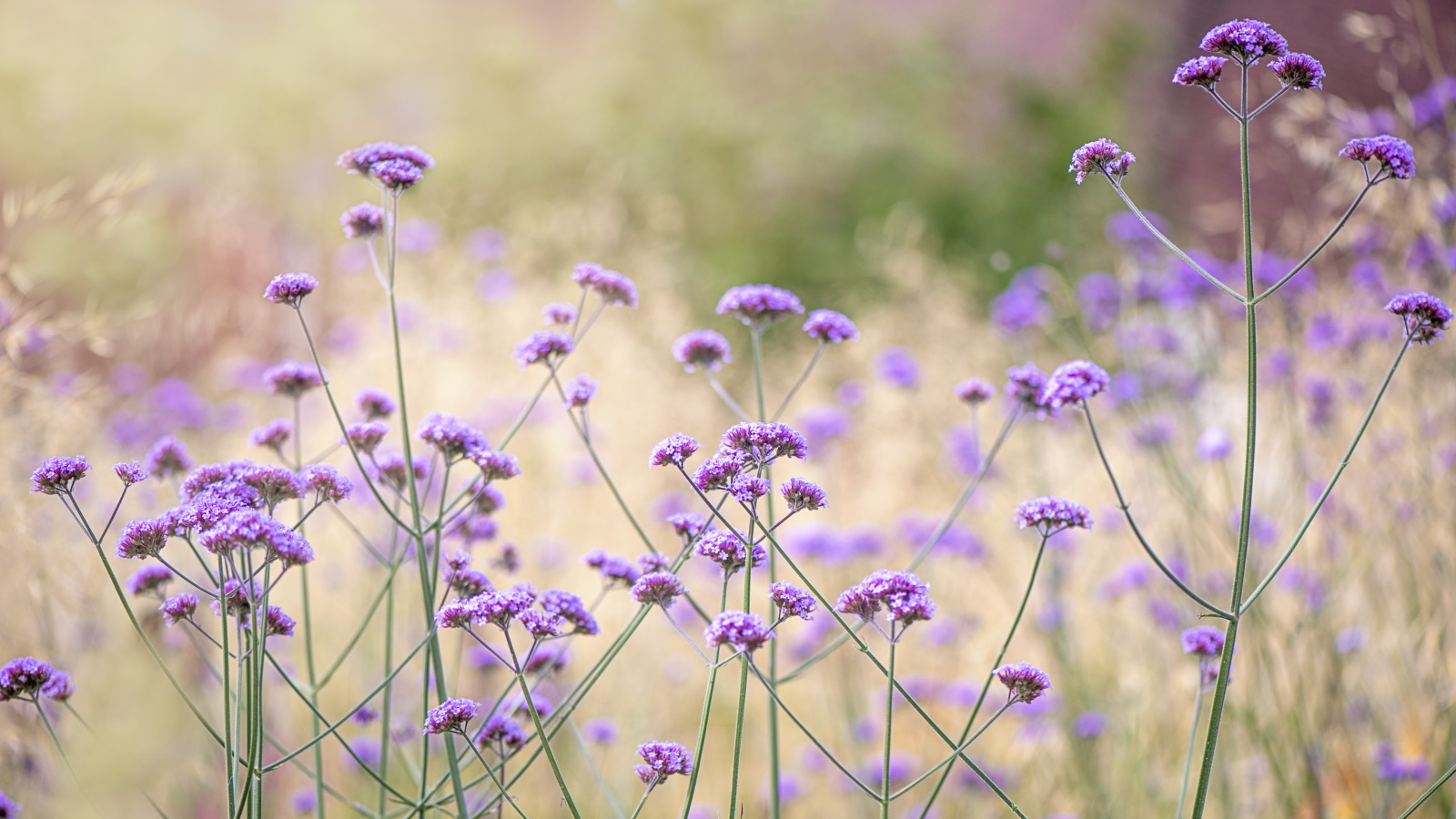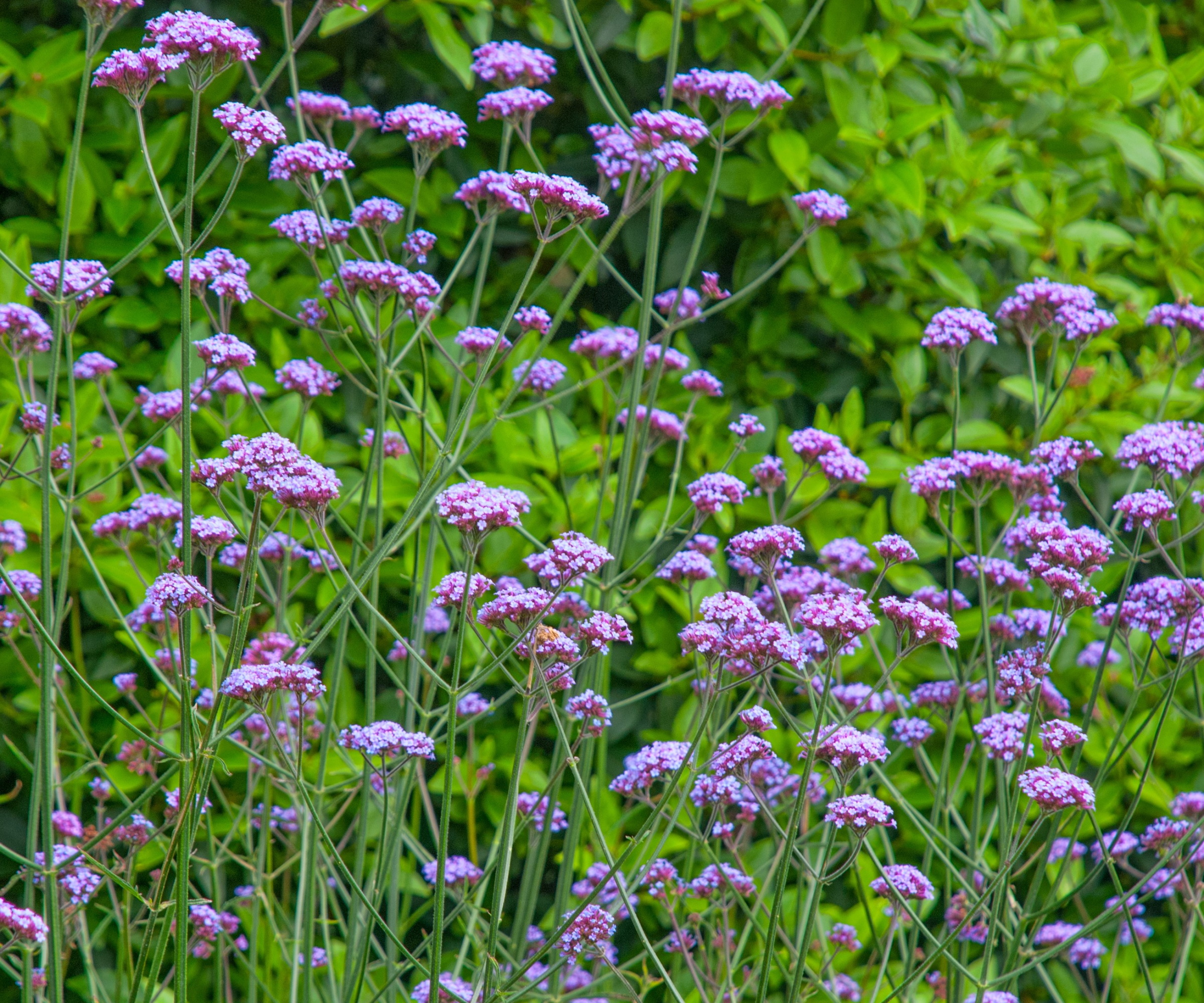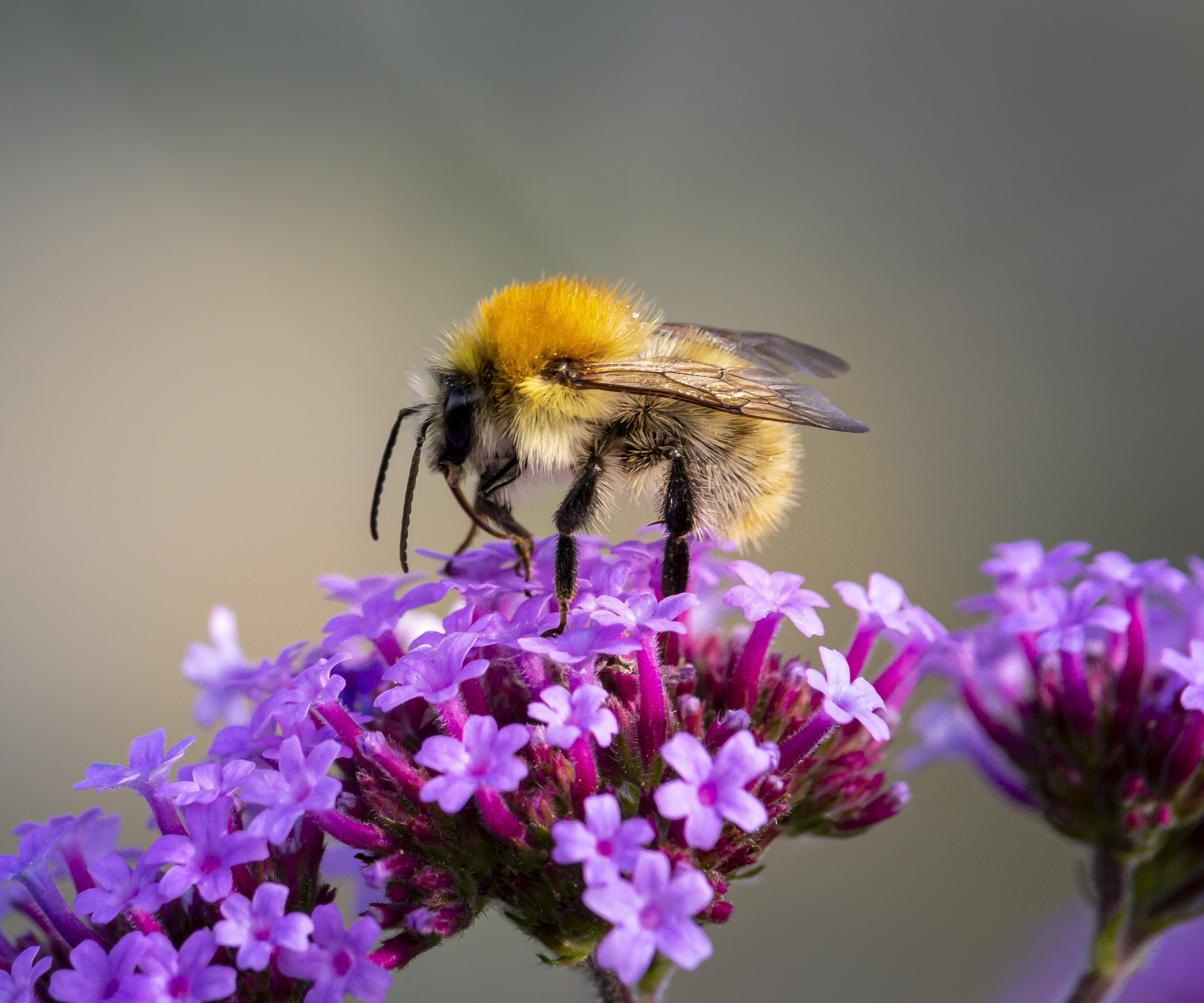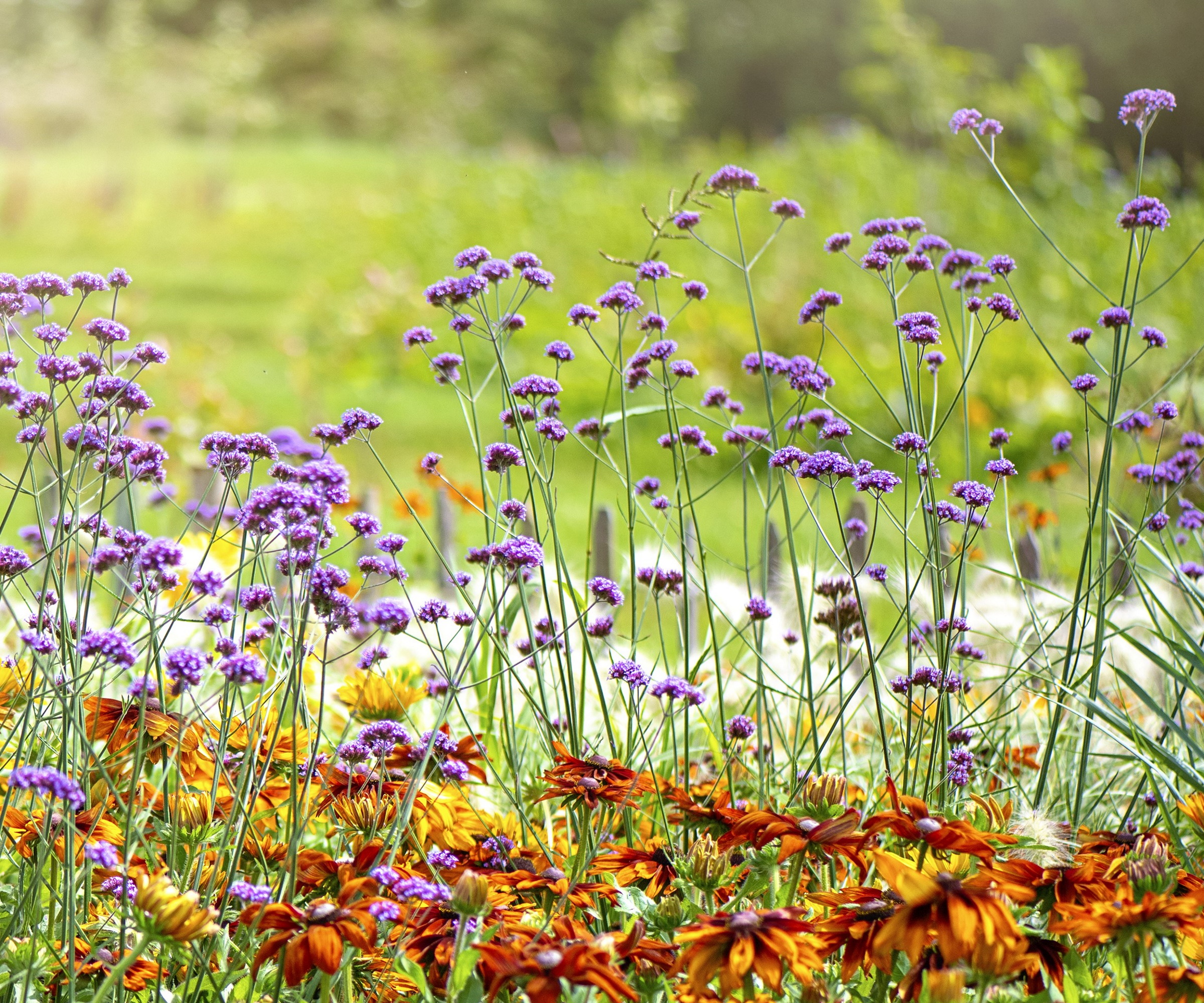
Verbena plants pack a powerful punch. Their colorful flowers bloom profusely from spring through to the first frost, making them an ideal addition to flower beds and landscaped backyards.
Native to the Americas, verbena has been cultivated and grown in various regions across the world. Today, many species and varieties of verbena are readily available and are popular with gardeners, famed as a plant that performs well and is easy to grow.
One such species is Verbena bonariensis, seen in the images here. This tall and slender species can grow up to 6 feet tall, towering upwards with fountains of purple flowers that are pollen-rich, going on to produce seed for birds in the fall.
These plants thrive in bright, sunny conditions and prefer a well-draining and moderately fertile soil. By following a few simple rules, your verbena plants will reward you with a prolific display of vibrant flowers that attract birds, butterflies and pollinators, making it a delightful addition to any garden or backyard.

How to grow verbena
Most verbena species and varieties are easy-to-grow, and by following a few simple rules, this low-maintenance flowering plant will reward you with blooms that last from spring through to fall.
Verbena species and varieties to consider

Most verbena species and varieties are hardy in US hardiness zones 8 - 11. Outside of this, many gardeners treat verbena as an annual, in the knowledge that the plant will not survive the cold of winter. This will be specific to your location and the plant that you select.
'There are over two hundred species of verbena,' says Ali McEnhill, plant expert and owner of the Old Dairy Nursery in the Hudson Valley.
'As a New York grower, I’m delighted by our native Verbena hastata, common name blue vervain,' Ali says. 'The foliage is coarse, but the tall spikes of purple-blue flowers are graceful and are adored by pollinators. This North American native can be found growing in moist meadows, along streambanks and in fields.'
'This tough, native perennial is super cold hardy, tolerating temperatures down to -40°F,' Ali continues, so it does just fine growing in a cold climate, like zone 5, where Ali gardens. This species is popular for its hardiness and readily available from garden stores, such as this Blue Vervain from Nature Hills.
Verbena bonariensis, seen above, is not quite so hardy, growing best in US hardiness zones 7-10. 'Deep lilac flowers are held on tall wiry stems,' Ali says, 'and it is a real treat to watch the purple flowers swaying gracefully in the breeze while covered in pollinators.'
Always pick the right plant for the right place. By following this simple mantra your planting selections are far more likely to succeed. Your plants will be happier for it and so will you, as you watch your backyard thrive.
Verbena hastata, or blue vervain, is a popular and hardy perennial. These native, biennial flowers are perfect for adding a bit of blue or lavender to your garden or yard, and pollinators adore them.
How to grow verbena

- Soil: Verbena plants prefer 'well-drained soil,' says Jason Reeves, horticulturist at the University of Tennessee Gardens, Jackson. For additional nutrients, consider adding organic matter when planting your verbena, using a product such as this Organic Planting Mix from Nature Hills.
- Light: Whilst this will vary between different species and varieties, most verbenas are sun-worshippers, 'preferring six or more hours of sun,' says Jason. Whilst verbena plants will tolerate a part-shade position, flowering will be much reduced when planted in a shady spot.
- Watering: Most verbenas 'are drought tolerant once established and growing in the ground,' says Jason, particularly those species that are native plants. If planted in a container or pot, watering will be required, particularly during the warm summer months. It is best to monitor your plants to assess watering requirements during the first year, at least until they are established.
- Fertilizing: Most verbenas do not require fertilizing and will attain what they need from the soil. Regular, annual mulching can help to add nutrients to the soil. If you are considering using a fertilizer to support plant health and flowering, an all-purpose feed should do the job, applied every month through the growing season.
- Care: During the summer months, verbenas can 'benefit from regular deadheading, particularly if grown in a container,' says Jason. If grown in the ground, it is preferable to leave this native plant to its own devices. Come fall, the old flowers become seedheads, taking on an attractive color and texture, which is useful for cut flower and dried flower bouquets, as well as encouraging wildlife.
- Additional notes: You can cut back verbenas during the growing season to extend their floral performance. It is advisable to cut back your verbena after the first flowering flush, usually around the middle of spring, reducing the size by about a third. Within a few weeks, you will once again have many verbena blooms to enjoy. This can also be done later during the summer. Cut back to ground once a year in early spring, just before new growth begins to shoot. This is recommended as last year's growth helps to protect the plant, particularly in cold areas where there is a risk of snow during the winter.
FAQs
When is the ideal time to plant verbena?
Verbena can be planted in the garden or yard once the risk of frost has passed, usually in mid-spring. If you would like to try your hand at propagation, verbena seed can be sown indoors from February, moving outside to a cold frame in mid-spring, before planting out in the garden a few weeks later, ensuring that young plants are protected from windy and cold weather.
Using native planting in your yard, such as verbena, will add impact and interest to your flower beds. Why not consider also planting native grasses, which will complement your flowering plants through the spring and summer?







